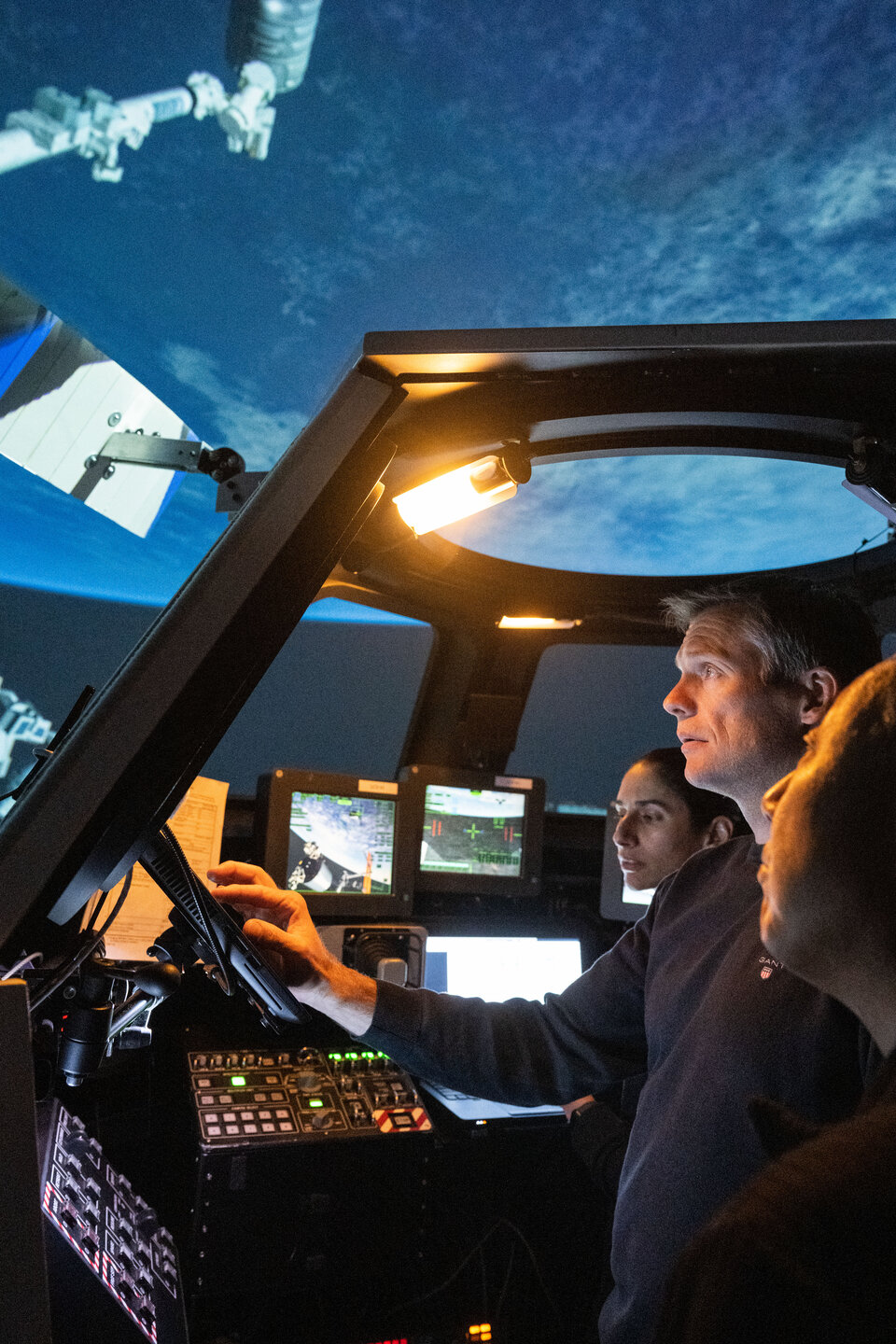23.05.2023

The Huginn mission – an overview

ESA Astronaut Andreas Mogensen will fly to the International Space Station for his second mission called Huginn, in late summer of 2023. It will be a mission of firsts for both Andreas and ESA.
Naming a mission
The Huginn mission name, chosen by Andreas, originates in Norse mythology with Huginn and Muninn – the two raven accomplices of the god Odin. The two ravens symbolise the human mind, with Huginn representing thought and Muninn, memory. Norse mythology tells that tale of two ravens who flew into the world every morning and gathered information from the farthest corners of the world to bring back news to Odin.
“Huginn is a great name that represents my mission, going to the International Space Station to gather knowledge through science and talk about what I find,” says Andreas.
The mission patch shows the raven Huginn with the silhouette of Denmark on its wing and a white line leading from Copenhagen, Denmark, the birthplace of Andreas, to the International Space Station. The red and white colours of the mission patch are inspired by the Danish flag.
Piloting the Dragon
Andreas will be the pilot in the SpaceX Crew Dragon and become the first European to take that role. He will be sitting next to Crew-7's commander and NASA astronaut Jasmin Moghbeli. Andreas will be responsible for the spacecraft’s performance and systems, like a co-pilot on an airplane. The Crew Dragon launches and docks automatically with the Space Station, but Andreas and Jasmin can take over control of the spacecraft if necessary.
Andreas will be the fourth ESA astronaut to fly under NASA’s commercial crew programme, following Thomas Pesquet, Matthias Maurer and Samantha Cristoforetti. The Crew Dragon will dock to the International Space Station, marking the start of Andreas’s half-year stay on the Space Station
A long-duration mission filled with science

On his first mission ‘iriss’ in 2015, Andreas stayed on the Space Station for 10 days. He slept inside the Columbus module and worked close to 10 hours each day to maximise his time in orbit.
Huginn will be Andreas’s first long-duration mission to the International Space Station, where he will work and live for half a year as part of Expeditions 69 and 70. He will conduct over 30 European experiments during the Huginn mission. The experiments are divided into three pillars: climate, health, and space applications for daily life.
The climate experiments vary from water filtration to understanding thunder phenomena, where Andreas will take images of thunder clouds from the Cupola module on the Space Station.
Maintaining a healthy lifestyle during a long-duration mission to space is vital. Andreas will run several experiments to better understand how astronauts sleep in space and how to support astronauts' mental health with virtual reality videos of calming environments.
Science in space delivers solutions for problems in our daily lives on Earth. During the Huginn mission, Andreas will monitor 3D-printing metal objects on the Space Station with an ESA printer and will control a group of robots on Earth from the European Columbus module.
For more details on the Huginn mission, follow Andreas on Twitter, Instagram, Facebook and on ESA social media channels.
Quelle: ESA
